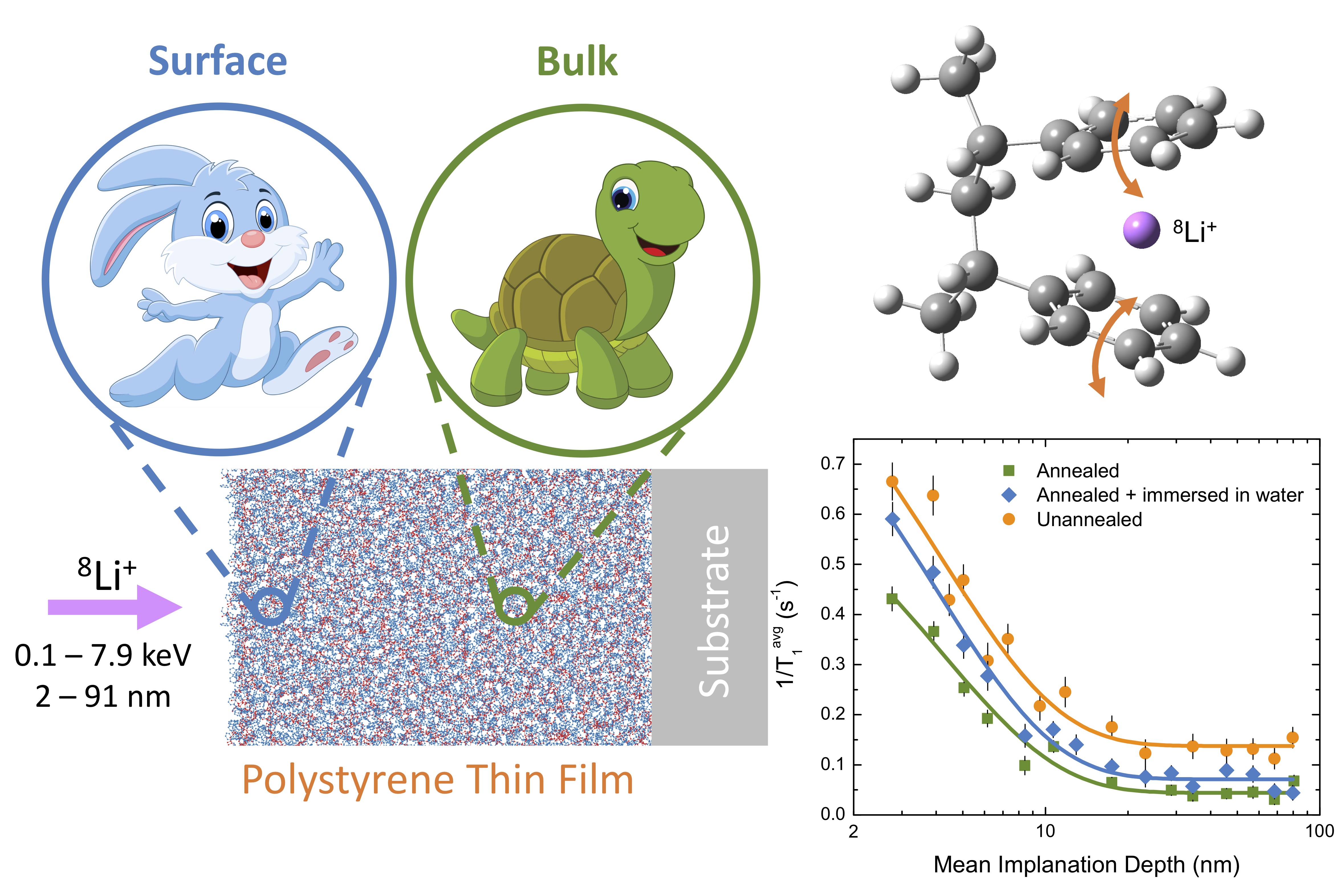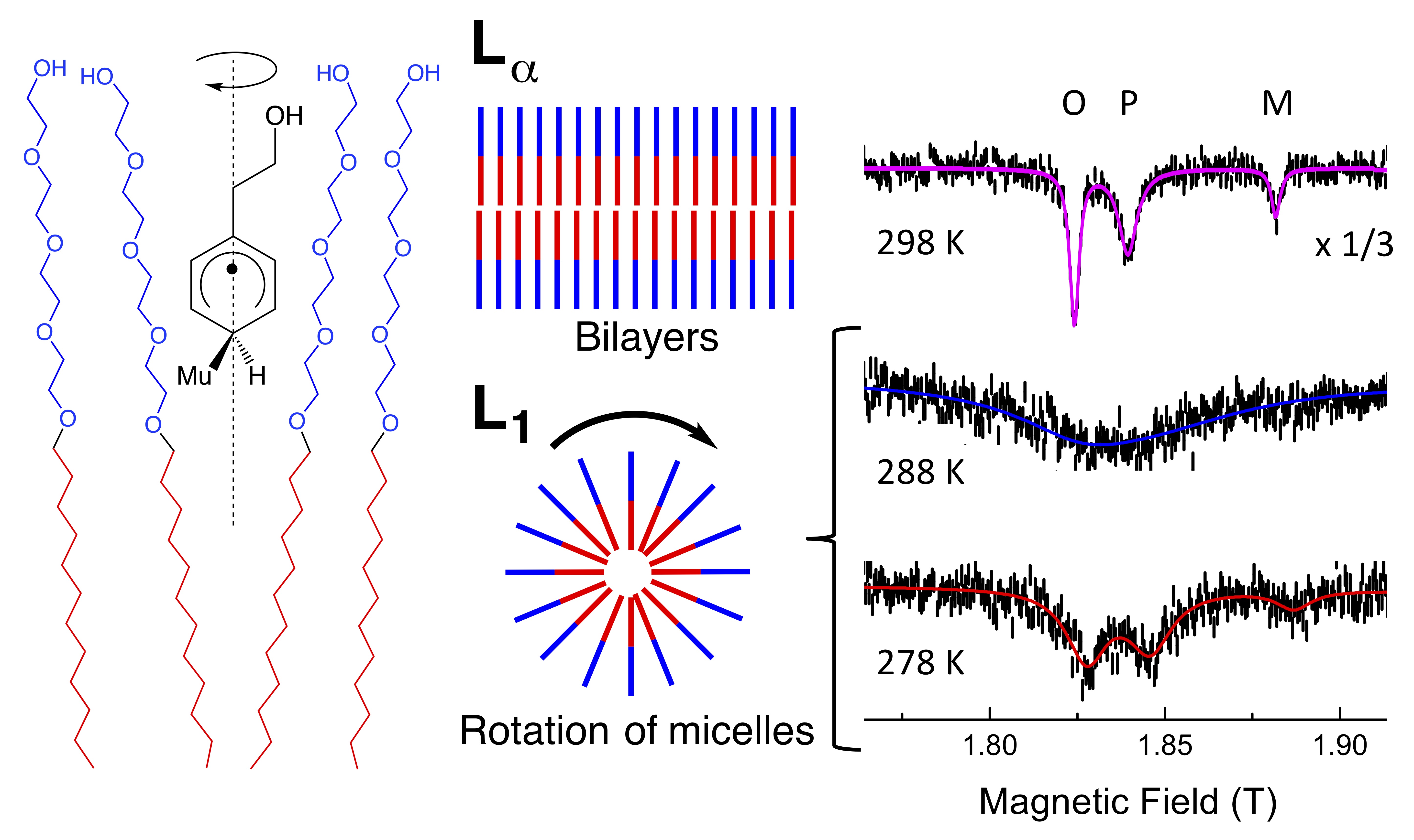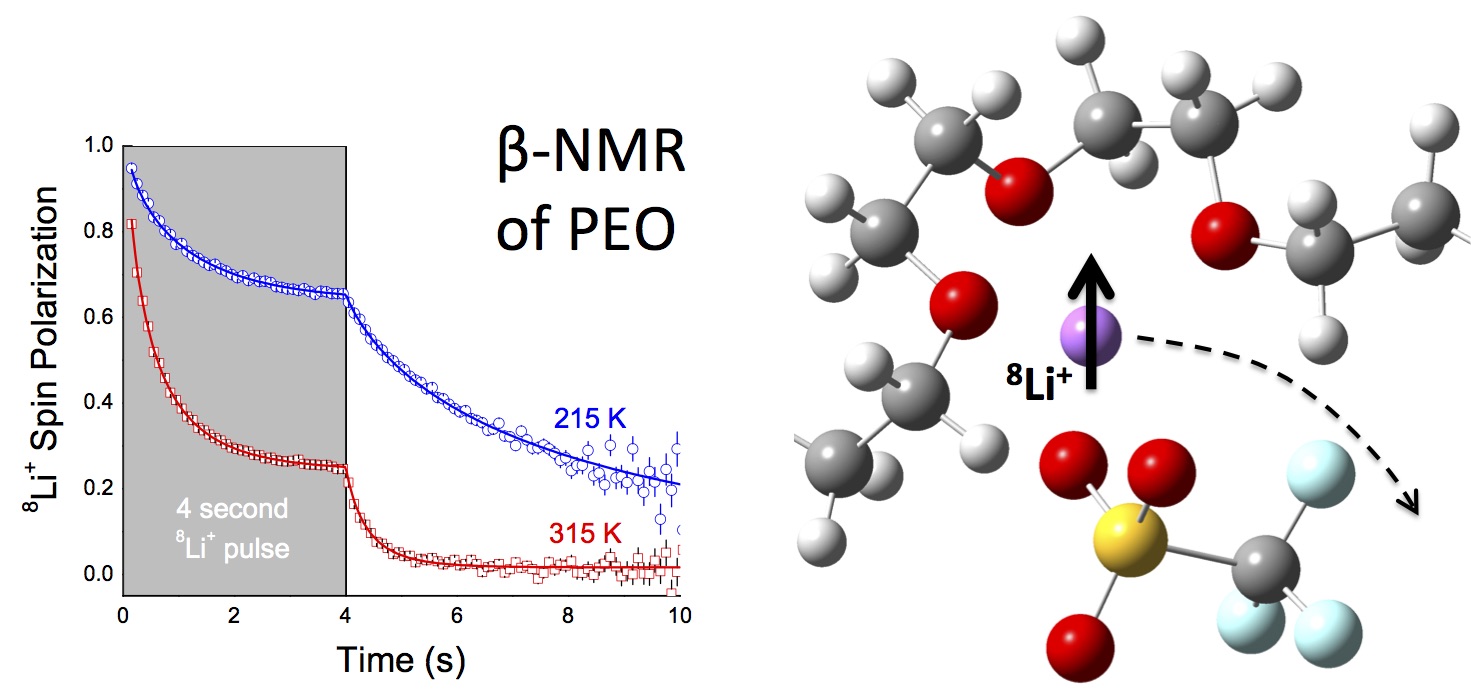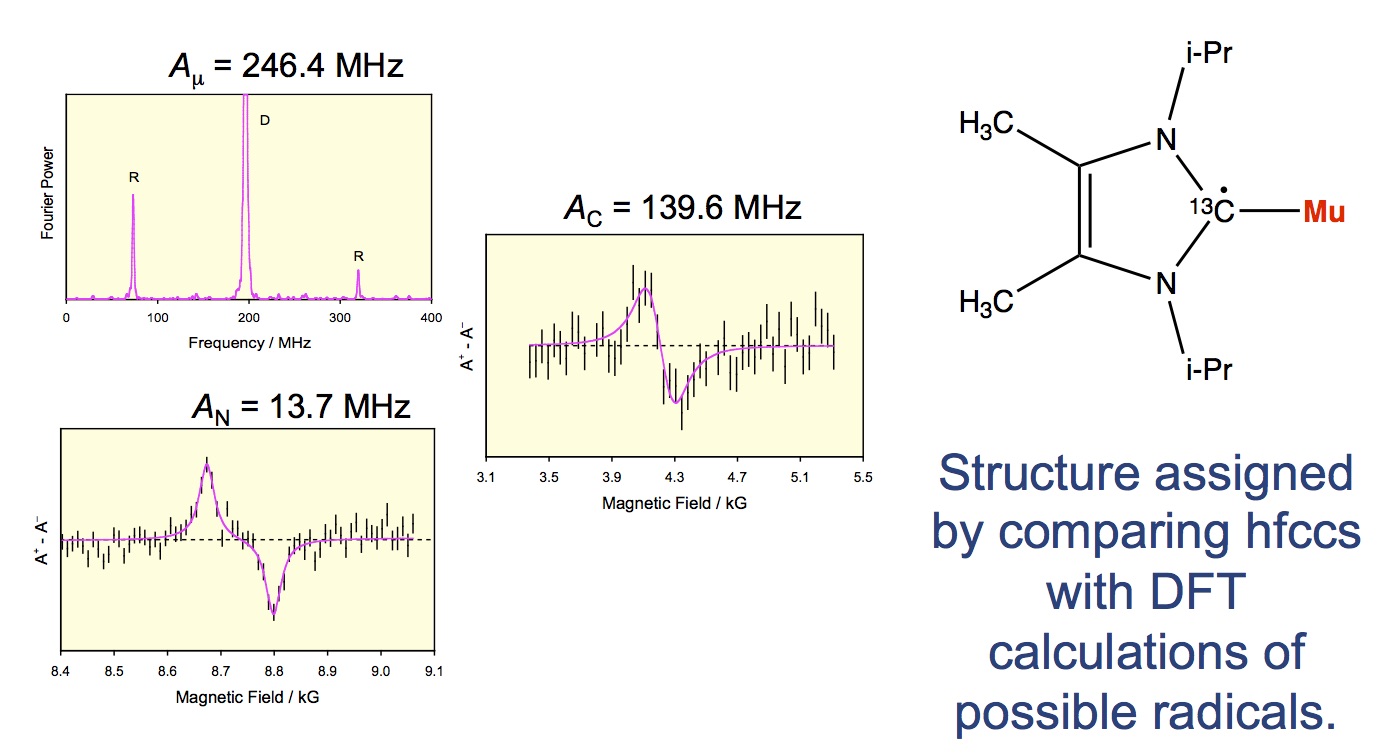|
Canada's particle accelerator centre
|
Current Research Projects
Depth Dependence of Polymer DynamicsThin films have very different properties from their bulk forms due to the effects of reduced dimensions and interfaces. The reduction of the glass transition temperature in polymer films less than ~40 nm thick has been explained in terms of a near-surface region with faster dynamics than the bulk material (hence the tortoise and the hare), but direct experimental evidence for this had been lacking. We have used βNMR of implanted 8Li+ to study the depth dependent dynamics of polystrene near a free surface and provided the best evidence for a thin region near the surface approximately 10 nm thick with enhanced dynamics compared with the bulk (Soft Matter (2015) 11, 1755, Soft Matter (2018) 14, 7324 and J. Chem. Phys. (2022) 156, 084903). |
|
|---|---|
Spin Probes in Soft Condensed Matter.Muoniated radicals can be used as spin probes in a variety of soft matter systems. We have used µSR to study partitioning of cosurfactants in bilayers and micelles (Phys. Chem. Chem. Phys. 2006, 8, 4723, Phys. Chem. Chem. Phys. 2017, 19, 9551, and Phys. Chem. Chem. Phys. 2021, 23, 25542) and microscopic dynamics in calamitic (rod-like) (J. Phys. Chem. B (2011) 115, 9360) and discotic liquid crysals (Phys. Rev. E (2013) 87, 012504). Muoniated radicals are very sensitive to the polarity of the local environment and the amplitude of fluctuations in anisotropic environments. We are currently using this technique to study the local environment and dynamics of alkyl chains and cholesterol in model biomembranes and their interactions with drug molecules. |
|
Lithium-Ion Diffusion in Battery MaterialsMeeting our climate change goals requires drastic improvements in battery technology. A crucial part of Li-ion batteries (LIB) is the electrolyte, and a better understanding of the microscopic process of Li+ diffusion within the electrolyte is needed to improve LIB performance. Poly(ethylene oxide) (PEO)-based electrolytes are being investigated for applications in LIB due to their large ionic conductivities. We have used βNMR to study lithium ion diffusion in thin films of PEO and PEO containing salts such as as lithium bis(trifluoromethane)sulfonimide (LiTFSI) (J. Am. Chem. Soc. (2014) 136, 7833 and J. Chem. Phys. (2017) 146, 244903). We are currently studying Li+ diffusion in mixtures of PEO and ionic liquids. |
|
Structure and Dynamics of Free Radicals Using Muon Spin SpectroscopyThe positive muon (µ+) can be incorporated into free radicals where it acts as a probe of the structure and dynamics. The muoniated radicals are characterized by a series of magnetic resonance techniques known as µSR for muon spin rotation, resonance and relaxation spectroscopy. I have used µSR to study several isotope effects on several novel chemical species including the methyl radical and Mu adducts of stable carbenes. (Annu. Rep. Prog. Chem., Sect. C: Phys. Chem. (2013) 109, 65) I have recently been studying the reaction of Mu with organometallic compounds such as ferrocene (Phys. Chem. Chem. Phys. (2014) 16, 10600) and ruthenocene (Can. J. Chem. (2018) 96, 358). We are currently studying the muoniated radicals produced by the reaction of Mu with phthalocyanines and antioxidants. |
|
Computational Chemistry of Free RadicalsWe use density functional theory (DFT) calculations to study muoniated and conventional free radicals. My current interest in this area is organic semiconductors (OSCs) where several groups have claimed that µSR can be used to measure the intrinsic electron hopping rate or provide information about the electron spin relaxation rate. I have shown that Mu addition to Alq3 changes the energy levels and pins the unpaired electron meaning that the claim to have measured the intrinsic electron hopping rate is incorrect. (J. Phys. Chem. A (2010) 114, 12759 and J. Chem. Phys.(2022) 157, 064702). |
|
|
Centre for Molecular and Materials Science |
Facility Outreach Scientist |





